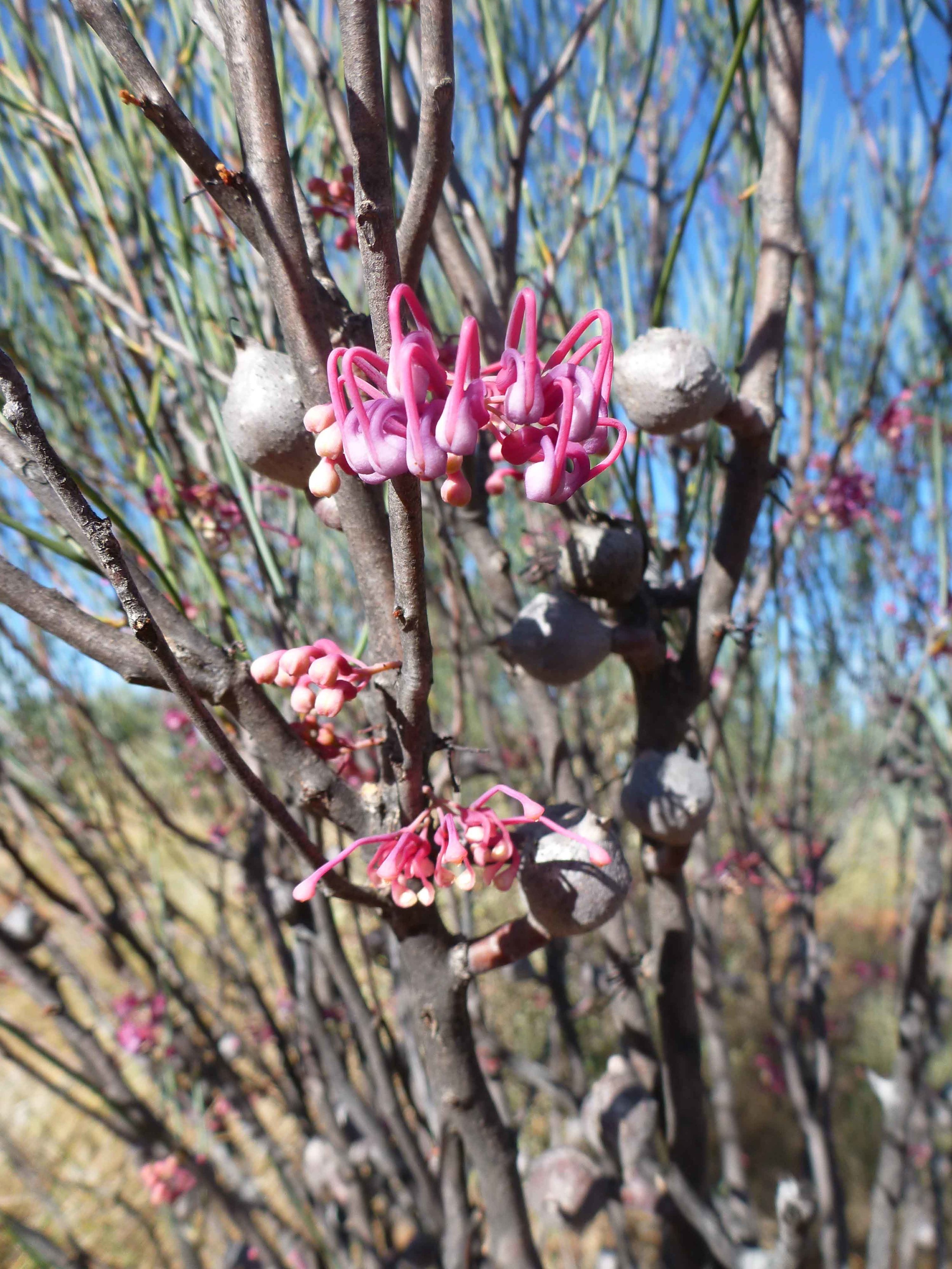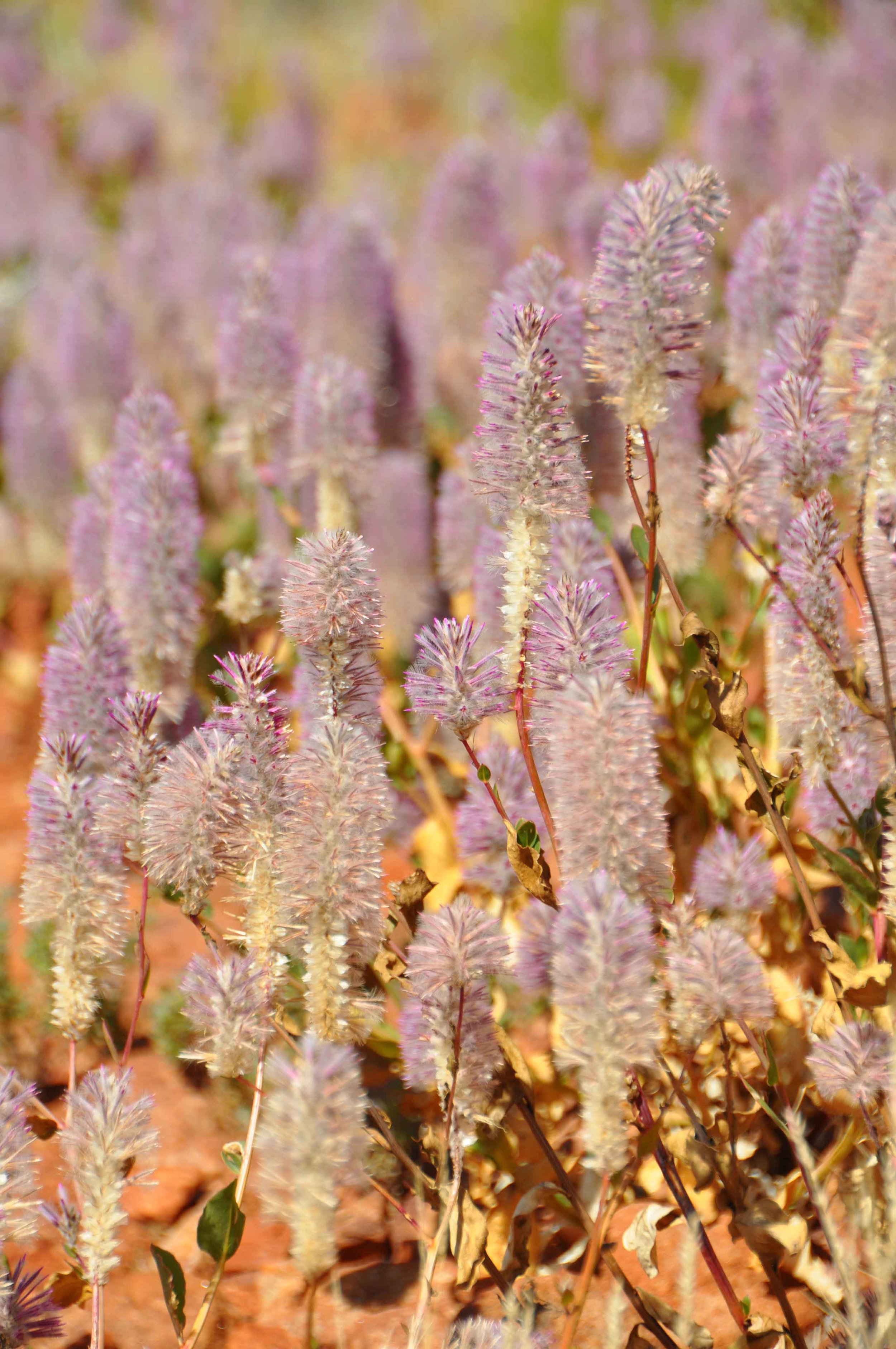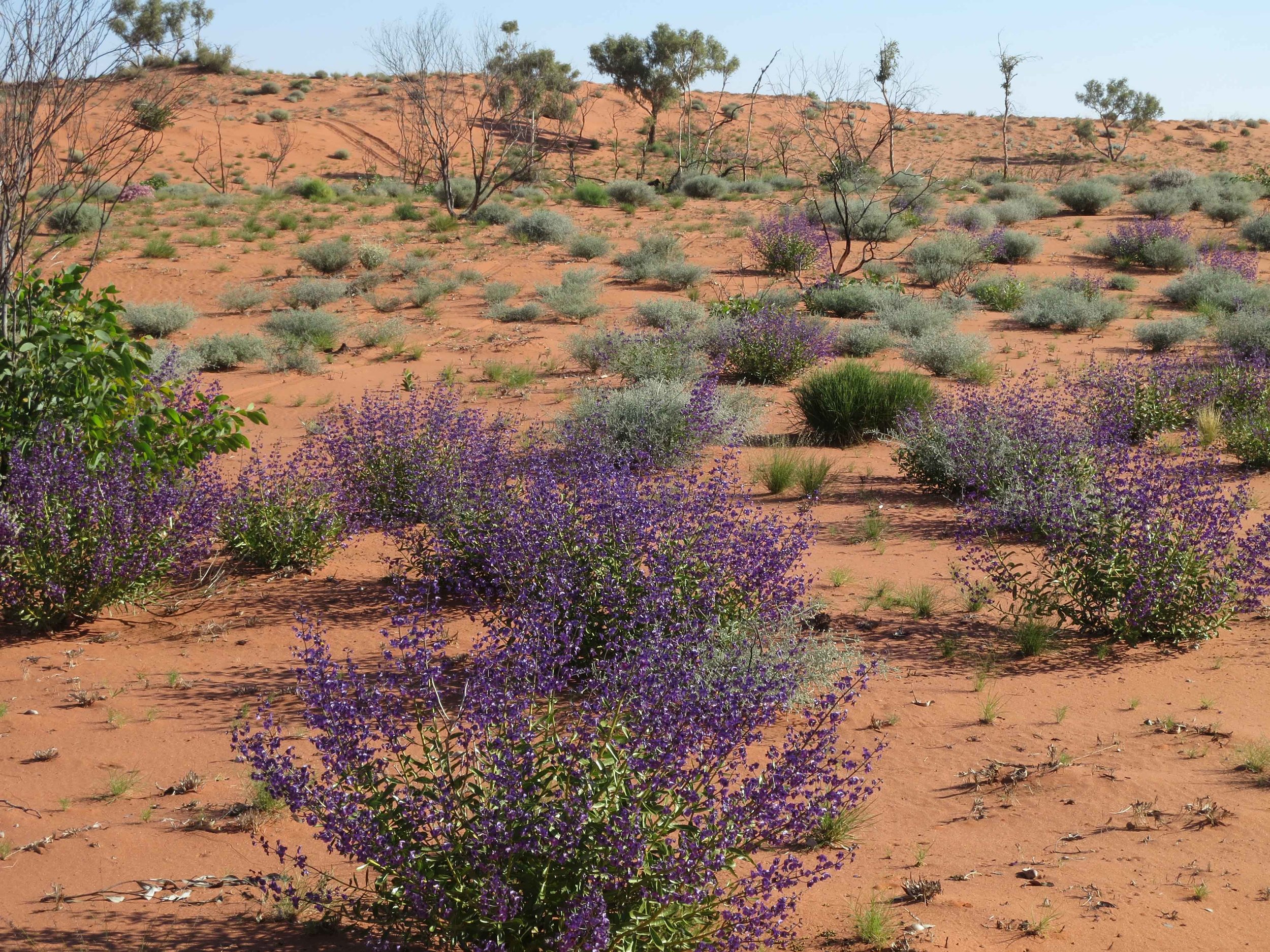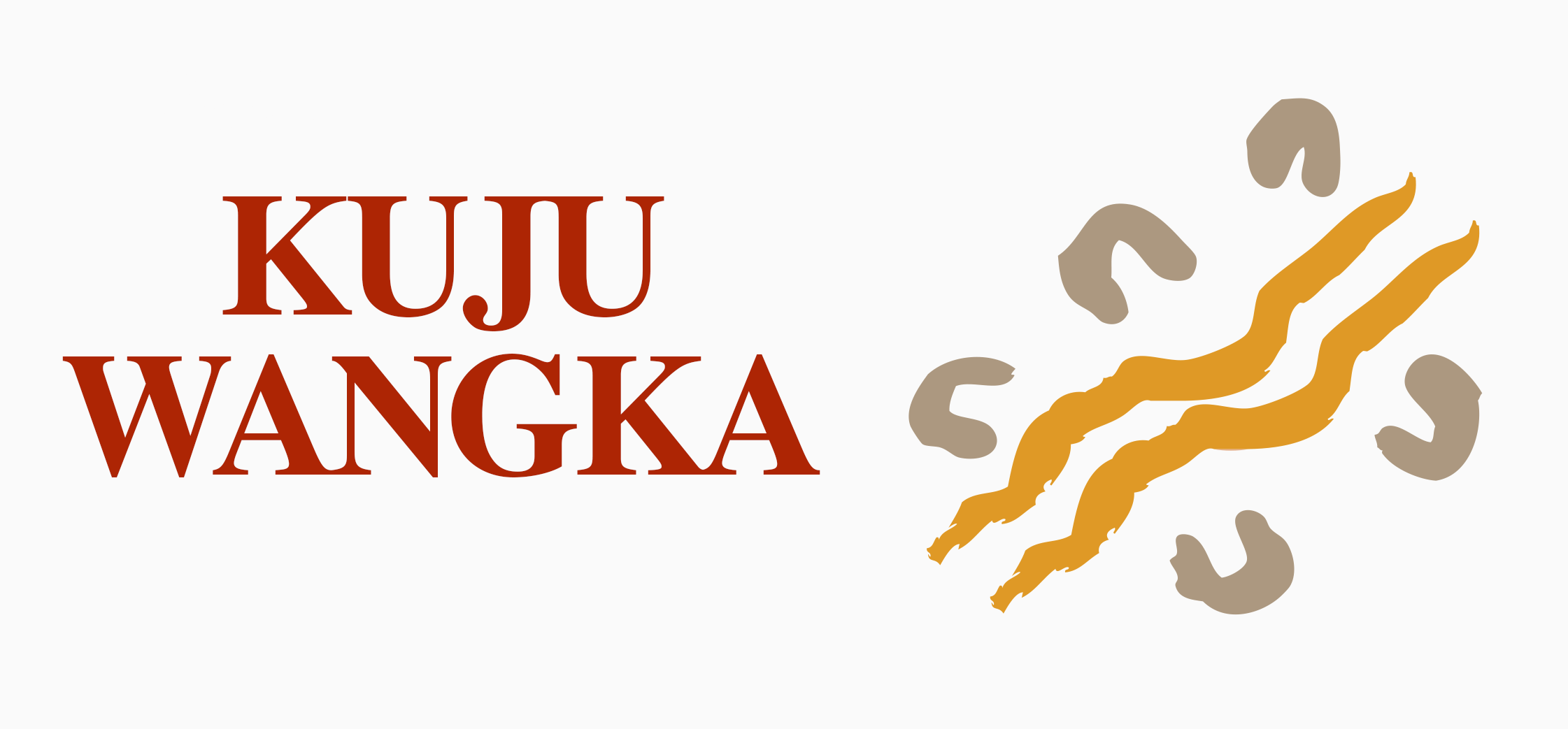Flora
Country surrounding the Canning Stock Route (CSR) has a rich array of vegetation types and plant species and covers 6 IBRA regions with distinct landforms.
Many plant species are little known to western science and poorly collected and understood. Traditional Owners hold a deep knowledge of plants, and continue to use plant species for many reasons. Food, medicine, ceremonial use, tobacco, tools and weapons, and to obtain water, are some of these uses.
The most widespread vegetation along the CSR is spinifex grassland, occurring on a wide range of environments, including sand plains, dunes and sandstone and quartz hills. At least 10 species of spinifex grow on Country surrounding the CSR.
Many types of woodlands also occur, including mulga, desert oak and eucalyptus. Mulga (an Acacia species) grows in different forms: as a tree; a shrub; and with variable leaf and flower shapes. Mulga is susceptible to large uncontrolled bushfires because it is slow growing, so faster growing understorey species like spinifex are advantaged when fires occur frequently.
Many of the wells are located near semi-saline areas and claypans where salt-tolerant shrubs and melaleucas grow. Some of these plants, the samphires, have succulent beaded leafless stems. These plants also colonise the narrow fringes of salt lakes.
A diversity of shrublands also occur along the CSR, including various wattle species, mulla mulla (Ptilotus), emu-bushes (Eremophila), grevilleas and hakea. Areas of annual grasses, herbs and low shrubs also occur.





